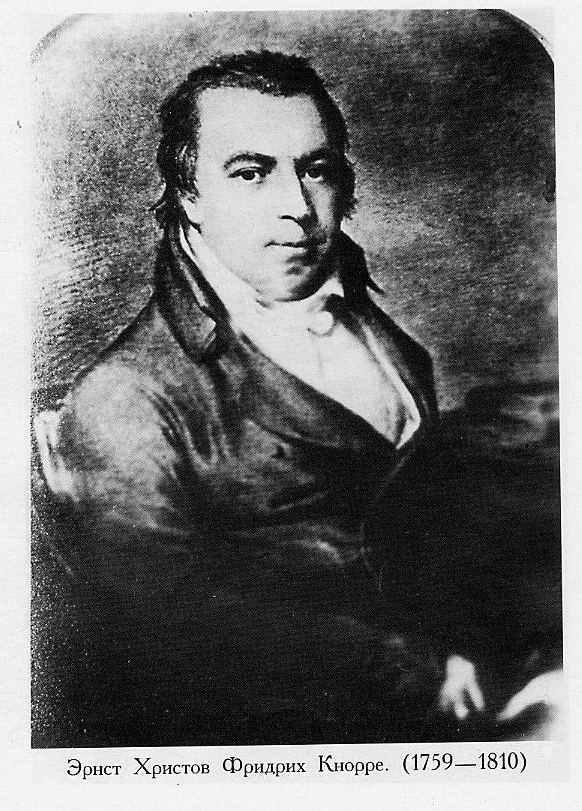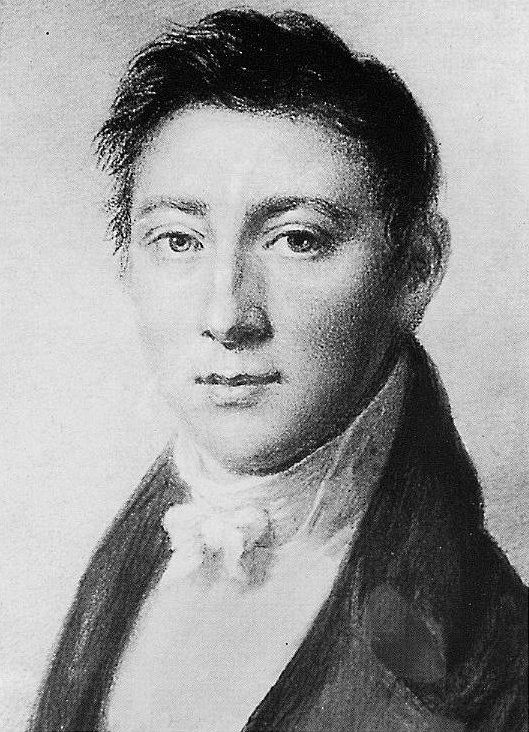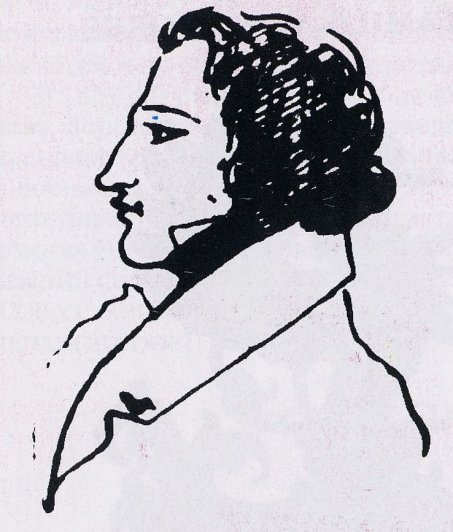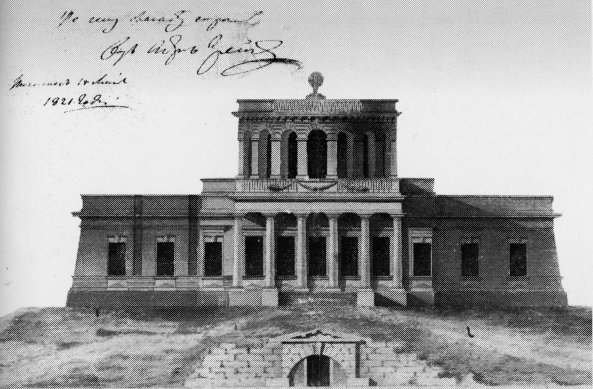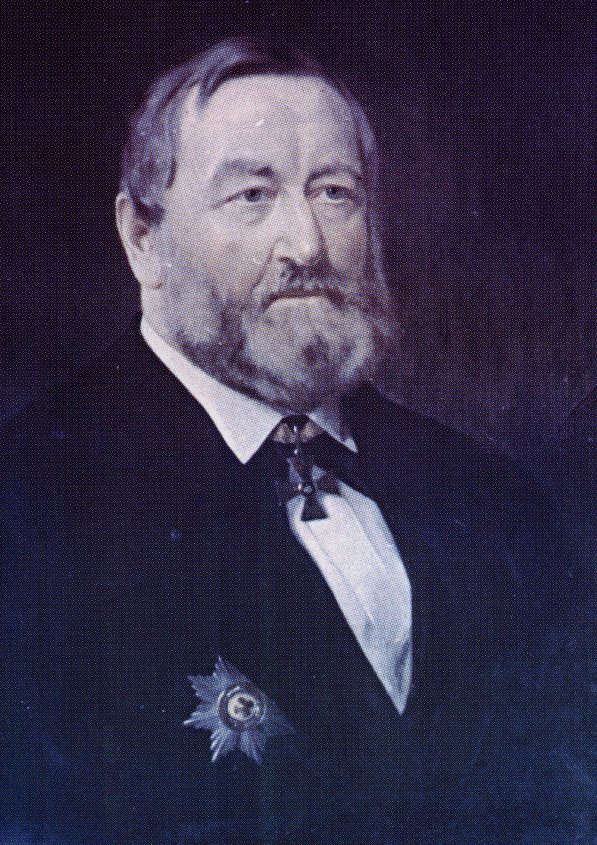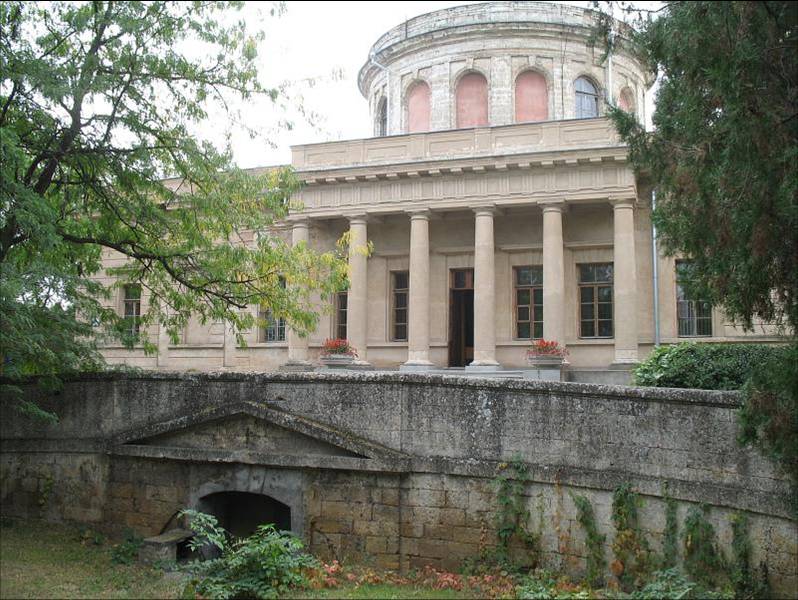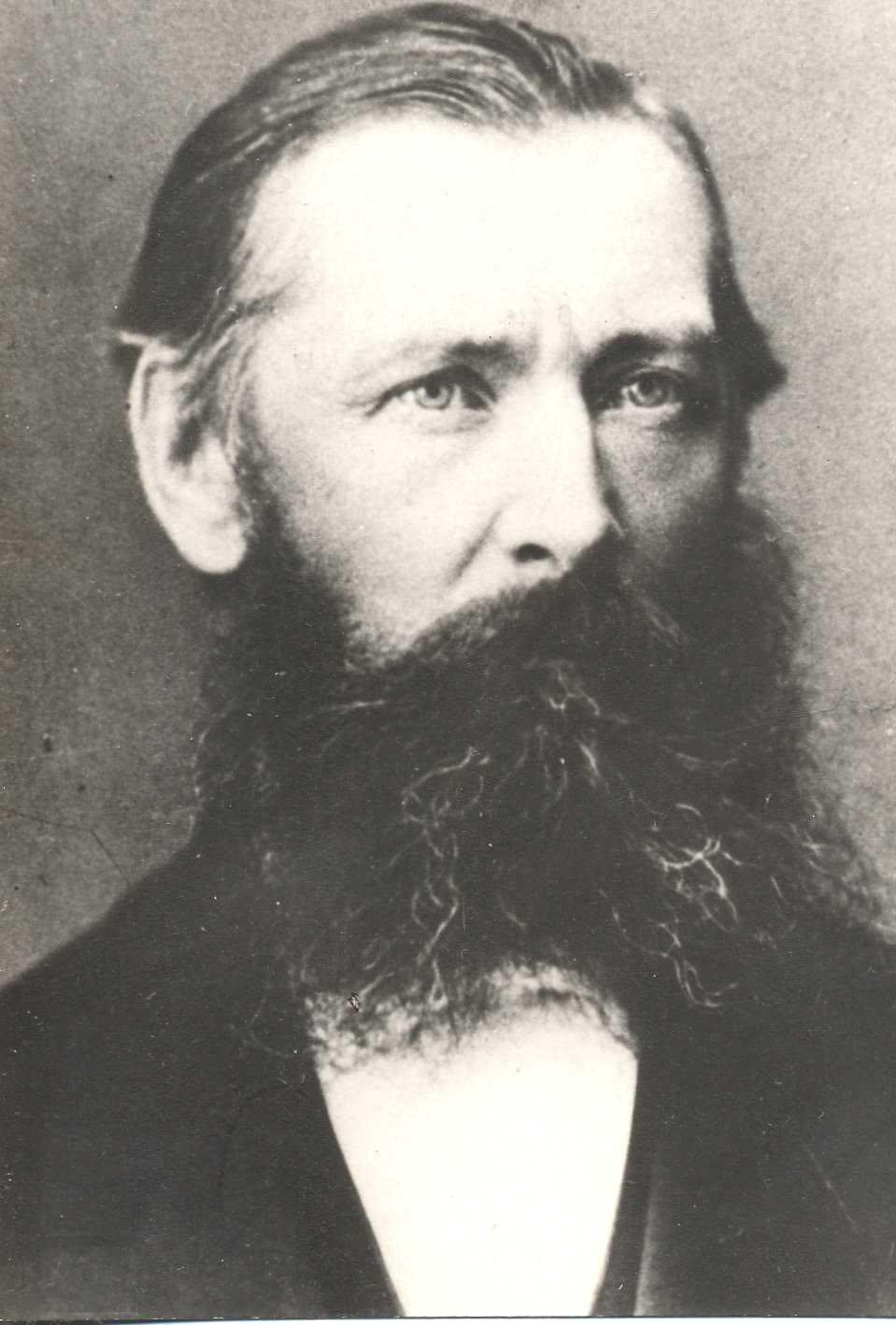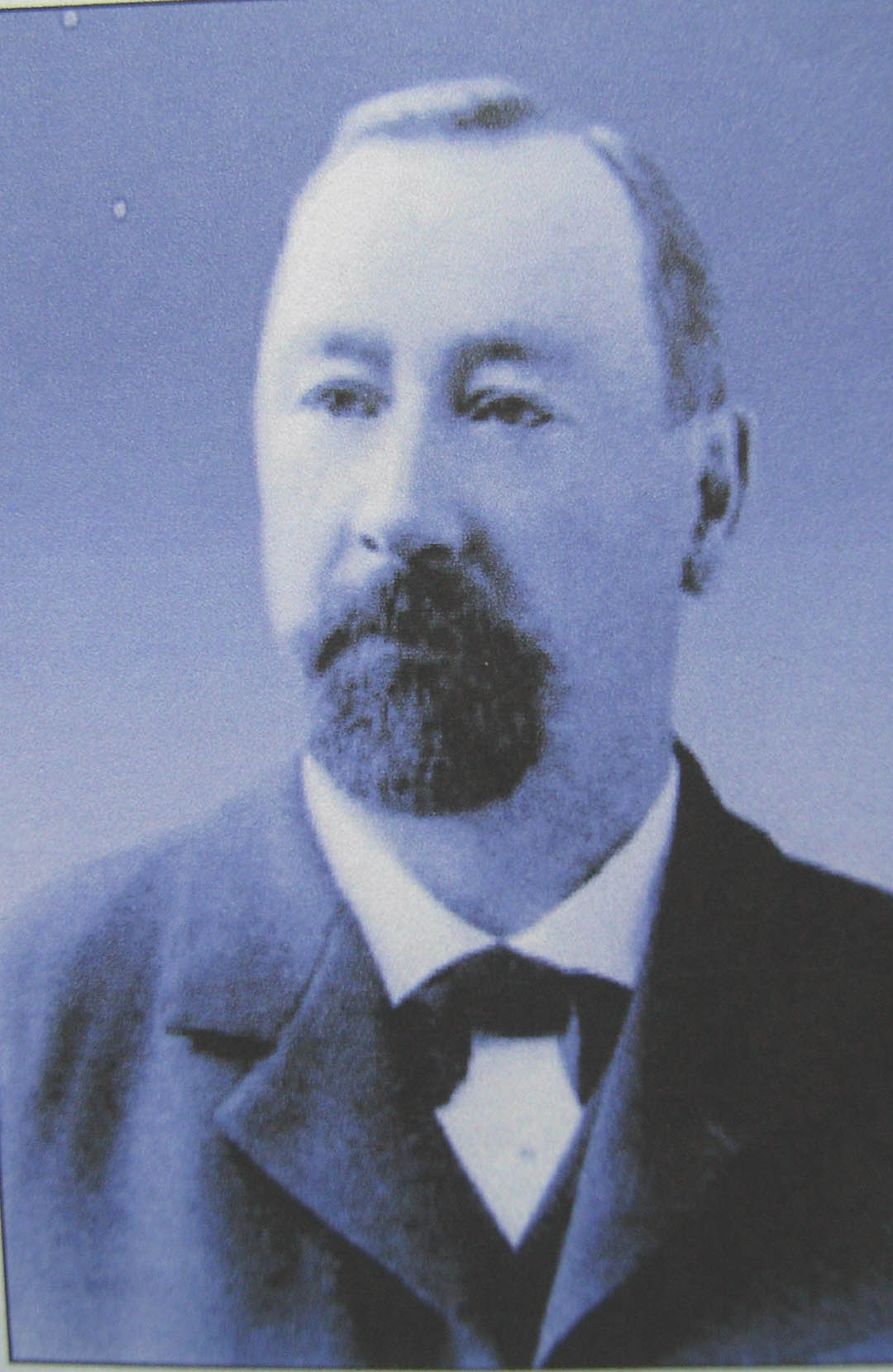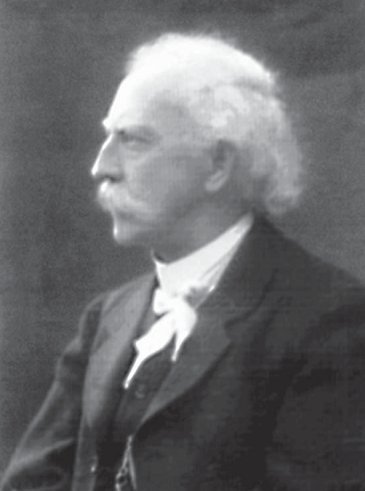ASTRONOMERS AND OTHER PROFESSIONS IN THE KNORRE FAMILY
by Suzanne Héral
___________
|
The story of the Knorre family starts in Haldensleben,
a small town near Magdeburg in Saxony. There, at the beginning of the
18th century, was recorded the first Knorre, Matthias Georg, a printer
by trade. His son Johann Friedrich became a brewer and the head of the
merchants' guild of Haldensleben where he spent all his life. But he
had two adventurous sons who took the initiative to move east at the
end of the 18th century and settled down in a province then called Livonia,
part of present Estonia..
These two young men had started studying theology at the university of Halle, a town near Leipzig. Then they found positions as private tutors with some families in Halle. In 1786, aged 28, the elder brother, called Johann Friedrich like his father, found the opportunity to open a secondary school for girls in the city of Dorpat, now called Tartu. He moved there and soon called his younger brother Ernst Christoph.to join him as a teacher at his school. Beside his activities at the school, Johann Friedrich was also the regular organist at Jaani or St John's church in Dorpat. In 1780 he left Dorpat for Narva where he became the preacher of the Lutheran community and president of its consistory. After his departure from Dorpat, he was naturally replaced by Ernst Christoph as headmaster of the school and organist at St John's or Jaani's church. At the age of 35, Ernst Christoph who always had a strong interest for exact sciences, started to practice astronomy regularly, although he had no specific training in that field. He undertook a daily record of his work [1]. "Entries in his journal start from 1795. On the same year, Ernst C.Knorre, who at that time had no astronomical instruments, used self-made devices to determine the geographical latitude of the city of Dorpat. For that purpose, with the help of a plumb-line he fixed four plates with round holes on top of one another to the wall of the two-storey house where he was living. The openings had different diameters, from 10 cm (for the top one) to 2 mm (for the lowest one). Using a mirror placed under the lowest opening, Knorre observed which star with a declination of 58 to 59° passed along the diameter of the uppermost opening. That star appeared to be x Ursae Minoris, though this is not certain, and what he saw, passed exactly along the diameter. It was the first and, of course, extremely primitive attempt (with an error of over 10') to determine the latitude of the observation place." Later Ernst C. Knorre continued his latitude determinations with the help of gnomons and from 1798 with the help of a small Hadley octant with division by 20'. His passion for astronomy won him a small circle of enlightened fans who helped him to conduct his observations. This brought him a certain fame and recognition. In 1802, after the re-establishment of Dorpat University by Tzar Alexander 1st, its first rector Fr. Parrot decided in 1803 to build an observatory there. The beginnings of what is now called the Old Tartu ?bservatory were brilliantly reported by Professor Pustylnik in an article published in the Proceedings of the Nikolayev 2006 Astronomical Conference [2]. Ernst C. Knorre was appointed to the post of assistant professor of pure and applied mathematics and astronomical observer at the then temporary university observatory. Thanks to his efforts, the observatory was equipped with sextants and other needed instruments. Then he could devote himself to practical astronomy. As he did not intend to limit his astronomical observations only
to the city of Dorpat, he undertook trips throughout Livonia during
the summer holidays of 1803 and 1804, in order to determine the latitude
of a certain number of places : Antsla, Paystu, Sangaste, Karulaz,
Kanepi, Tarvastu, now in Estonia and others like Ergli, Medzula and
Lyezere, now in Latvia. His great project was to produce a land survey
of the country. |
|||
|
In 1806 Ernst Christoph Knorre undertook to determine the
longitude of the city of Dorpat by applying the methods of Solar eclipses,
Lunar distances from the Sun and star occultations by the moon. He
obtained a mass of longitude values but, due to his lack of experience
in the handling of sextants and also due to the imperfection of sextants
themselves, the results of this enormous amount of work were disappointing
by their lack of precision. Later, Wilhelm Struve could use only one
determination obtained in 1810, the occultation of Aldebaran. |
Ernst C. Knorre (1759-1810) |
||
|
Karl Knorre young
|
As he was an assiduous and diligent pupil, Karl Knorre finished school very early and entered Dorpat University at the age of 15. He had an incredible passion for mathematics, astronomy and science. He remembered his father's astronomical observations and was eager to carry on his studies in that field. However, his uncle and legal guardian Karl Senff had different plans for him. Like many other people at that time, he believed that only theology could give the poor orphan a reliable livelihood. Therefore, Karl Knorre began studying theology at Dorpat University. But at the same time he continued to study mathematics on his own. Soon he called on himself the attention of Professor Wilhelm Struve, later appointed director of the Dorpat observatory. Here I want to quote a sentence of Professor Pustylnik :"… it has been universally acknowledged that the peak of scientific performance of Tartu (Dorpat) Observatory is associated with the name of Wilhelm Struve (1793-1864) and his pioneering measurements of stellar parallaxes with the aid of a Fraunhofer refractor." Now, at this early period of the Dorpat Observatory, Struve noticed Karl Knorre and supported his efforts at self-education and introduced him to the practice of astronomy. At that time, Struve was planning to undertake an extensive land survey of Livonia with the help of some of his students. He chose to take Karl Knorre among his assistants, thus giving him the opportunity to acquire a decisive experience in geodesy. Struve so highly valued Karl's work, that soon he recommended his student to Admiral Alexey Greigh who was looking for "a young and intelligent astronomer, able to help him to equip an observatory in Nikolayev on the Black Sea." So after his fruitful relation with his master Wilhelm Struve, Karl Knorre was to meet the second most important person in his life, Admiral Greigh, commander in chief of the Back Sea Fleet and ports, and military governor of Nikolayev and Sebastopol. The Admiral was also a man of great culture, an adept of technology and above all of astronomy. On the 7th of July 1820, the minister of the Russian Navy, then French marquis I. de Traversay, sent an official letter to Karl Knorre announcing to him that he was appointed to the post of naval astronomer for the Black Sea Department of the Ministry. He would be in charge of teaching astronomy to cadets and junior officers at the local Navy School and in return, would receive a yearly salary of 3 000 roubles, a decent free apartment and an immediate sum of 1 000 roubles for his moving expenses. At his request, Karl Knorre was allowed to postpone his departure to
Nikolayev until the beginning of the following year. He used these few
months intensively to improve his knowledge in Russian and in astronomy.
Then he left Dorpat for Nikolayev where he arrived in February 1821,
one month before his twentieth birthday. There, he discovered the manifold
duties assigned to him by Admiral Greigh. Beside his lectures on astronomy
to be given at the Navy school, he was expected to lead hydrographical
campaigns on sea and supply the Black Sea Fleet with exact time, and
astronomical instruments. He would also have to conduct observations
at the Admiral's private astronomical station, the pride of which was
a 2-foot meridian circle by Liebherr. That was the only place where
to practice astronomy before the construction of the future observatory. |
||
|
The works for building the Nikolayev naval observatory started on the 28th of May 1821 under the supervision of Admiral Greigh and Karl Knorre was not involved in the construction process. In 1823, as the works were progressing well, K. Knorre realized that within one or two years, he would have to install by himself all astronomical instruments, the most important of them being a meridian circle. Since he lacked the special knowledge and experience necessary to perform such a task, he asked Admiral Greigh for the permission to go to Western Europe on a field trip in order to get acquainted with the best astronomers and their techniques, the latest instruments and their best makers. The Admiral who appreciated the work and qualities of the young man, agreed to let him go on an extensive tour of Europe and granted him the sum of one thousand chervonets for that purpose. |
Project for the Nikolayev naval observatory |
||
|
Karl Knorre, as Director of Nikolayev naval observatory
The Nikolayev observatory (NAO) in 2007
|
The journey lasted over two years, from June 1825 to August 1827, during which Karl Knorre visited the most advanced observatories and met famous astronomers and makers of astronomical equipment. On his way to Western Europe, he first stopped in his hometown Dorpat/Tartu to visit the observatory, where his respected and beloved master Wilhelm Struve introduced him to handling the new meridian circle by Reichenbach he had installed in 1822. Knorre had the opportunity to examine carefully the foundations on which the instrument rested, as well as the closing system of meridian hatches. He also sought his master's advice on several astronomical questions. They were not to meet again until fourteen years later, in August 1839, on the occasion of the solemn opening of the Pulkovo Main Astronomical Observatory of Russia, where the appointed Director was no other than Wilhelm Struve. Having left Dorpat, Karl Knorre went to Koenigsberg (now Kaliningrad), where he visited the observatory. Its director, famous astronomer Friedrich Bessel, received him with great kindliness and generosity. Bessel allowed Knorre to conduct observations on his own meridian circle and they both observed star passages in order to determine the so-called "personal discrepancies". They held numerous conversations on astronomical problems and Knorre committed himself to making calculations for the so-called "Koenigsberg tables". He also agreed to participate in the drawing up of the sky chart and be responsible for its 5th sheet for the Berlin Academy of Science. Later, Bessel accepted to escort Karl Knorre to Munich during the summer of 1827 in order to visit famous engineer-maker Ertel, to whom Knorre had ordered the meridian circle for the Nikolayev observatory. After Koenigsberg, Knorre went to visit the Seeberg observatory, near Gotha, directed by astronomer Johann Franz Encke, and joined him to observe the passage of the comet afterwards named "Encke's comet". Later Knorre met astronomer Heinrich Schumacher in Altona and François Arago in Paris. With all of them he established friendly relations and a long-lasting correspondence followed. He also came into contact and made agreements with booksellers and various instrument makers for future deliveries of books and equipments to the Nikolayev observatory. After this long and fruitful mission across Western Europe, he came back to Nikolayev in August 1827 and immediately resumed his activities at the Navy School. The new observatory was completed in August 1832 and Karl Knorre took care of installing the meridian circle ordered from Ertel. In order to obtain a high precision in observations, he added to it an artificial horizon which he designed himself and had manufactured in Nikolayev according to his own instructions. Everything was going on for the best, when in August 1833 Admiral Greigh was suddenly recalled to Saint-Petersburg by Emperor Nicholas the 1st to be appointed member of the State Council. His departure from Nikolayev meant a great loss to Karl Knorre, from now on deprived of the precious and benevolent protection of the Admiral. For the exclusive concern of all successors of Admiral Greigh was to operate the daily service of the Navy. Karl Knorre was overburdened with many routine tasks which could have been performed by at least one assistant. As a consequence, he could devote but a small amount of his time to pure research in astronomy. Nevertheless, until his retirement in 1871, he scrupulously fulfilled all his duties toward the Navy. His long career is described in detail in the excellent biography on him published in 2004 by Professor Gennady Pinigin, Director of the Nikolayev observatory, and his Senior Research Associate, Professor Gregory Petrov [3]. I translated this book into French, adding to it family documents and a special chapter on Knorre descendants [4]. In the history of astronomy, the main contribution of Karl Knorre remains
his Fifth Sheet of the famous star chart published by the Berlin Academy
of Science. This sheet permitted the discovery of several small planets.
In the family sphere, Karl Knorre, with his fifteen children born from
three successive wives, is the founder of the so-called Nikolayev line
of the Knorre family [5]. |
||
|
KARL KNORRE'S EUROPEAN ITINERARY (June 1825 - August 1827) ________________________________________________________
|
|||
|
Victor Knorre, born in October 1840 in Nikolayev, is the third representative in the astronomers' dynasty. He was the fifth child of Dorothea born von Dietrichs, Karl Knorre's second wife. As a young boy, he was sent to Livonia in order to receive an excellent education at the famous school of Fellin (Viljandi). After graduation in 1859, he returned home and worked for two years as an assistant to his father at the Nikolayev observatory. In 1862 he left for Berlin and studied astronomy with Wilhelm Foerster. After taking his PhD, he was employed as astronomical calculator at the Pulkovo observatory. During his period of activity there, he escorted academician Wild on an extensive inspection tour of weather and magnetic stations across Russia. His task was to determine their geographical coordinates and to conduct magnetic measurements. In 1869, his poor health conditions forced him to return to Nikolayev, where he first acted as private tutor for his younger brothers and sisters. Then he obtained a teaching position with the local high-school, but including a miserable salary and little hope to improve it. Therefore, after his father retired in 1871 and moved to Berlin, Viktor did not hesitate to join him and finally settled down there. Soon, in 1873, Viktor Knorre was appointed Observer at the Berlin
observatory, whose Director was his former master Wilhelm Foerster.
There he found a rich field for his activity. Using a refractor made
by Fraunhofer, he dedicated himself mainly to the observation of asteroids,
comets and double stars. On the 4th of January 1876, he discovered
asteroid Koronis and in the following years three other asteroids,
Oenone, Hypatia and Penthesilea. In order to observe and determine
the path of asteroids, he built a special recording device, a micrometer
which he called "Deklinograph". He described its various
stages of development in numerous issues of "Astronomische Nachrichten".
His observations led him to introduce a number of improvements on
other astronomical instruments and equatorial telescope mountings.
In 1872 Viktor Knorre was appointed Professor of astronomy. His father
Karl had the privilege to witness the brilliant achievements of his
favourite son, and died in peace in 1883. Viktor's official career
ended when he retired in 1906. But he continued his scientific activity
privately and in 1909 and 1911 published works on a new equatorial
mounting "type Knorre und Heele". He had a prototype built
by Heele at his own expenses. Such were the many contributions of
Viktor Knorre to science, the last astronomer of the Knorre dynasty,
who died in 1919. |
Victor Knorre (1840-1919) |
||
|
Fyodor Knorre (1831-1911) |
Engineers-builders formed the second important dynasty in the Knorre family. It starts with our great-grandfather Fyodor Knorre, born in 1831 in Odessa, the eldest son of Karl Knorre and his only child from his first wife, Elisabeth born von Dieterichs. When he was seven, his father took him to attend the solemn opening of Pulkovo observatory but the second objective of the trip was to drive him later to Pärnu where he would start his education at the excellent local high-school. There he was left to the loving care of his grandmother Sophie and his uncle Theodor Senff, teacher at the same high-school. Fyodor stayed in Pärnu for more than eight years, until high-school graduation. Then his father sent him to Saint-Petersburg at first to study architecture at the Academy. Later he graduated from the newly created Institute of Civil Engineers. Finally, he completed his training by spending one year at the Berlin Higher School of Architecture [6]. Then he started his career as engineer-builder, working in different
parts of Russia. Among others, in 1870-72 he was associated to the construction
of a railway bridge over the Dnieper at Kremenchug. Afterwards, he participated
in the construction of several railway sections of the Moscow-Kolomna
line and the one to Saratov.Then, for five years he built grain silos
along the Bug river in Nikolayev. Afterwards he moved to Stavropol where
the governor appointed him successively architect and engineer for the
Stavropol province. He stayed there fifteen years. He fulfilled his
last significant mission in Krasnoyarsk where his brother Eugene had
called him to participate in the building of a railway bridge over the
Yenissey river for the Trans-Siberian main line. The works lasted four
years, from 1896 to 1899. |
||
|
But the most prominent representative of our engineers-builders
is definitely Eugene Knorre, already mentioned. Born in 1848
in Nikolayev, he was the twelfth child of Dorothea, second wife of Karl
Knorre. Having received his secondary education in Berlin, he was sent
by his father to Switzerland to study at the famous Zurich Polytechnikum,
from which he graduated in 1870. Then he participated in the construction
of different bridges over the Dnieper, western Dvina, Volga and Yenissey
rivers and became a specialist in the use of caissons in the building
of bridge piers. For his achievements on the Krasnoyarsk bridge he was
awarded the Golden Medal of the 1900 Paris World Exhibition, as well
as Gustave Eiffel for the Eiffel tower.
|
Eugene Knorre (1848-1917) |
||
|
Outside of astronomers and engineers-builders, there were other professional categories represented in the Knorre family. I want especially to refer now to three members of the medical dynasty founded in Pärnu by Karl Adolph Knorre. Born in Dorpat in 1799, he was the elder brother of Karl Knorre. He studied medicine at Dorpat University and then practiced his art for fifty years as city physician of Pärnu. With his wife Julie, born von Harder, they had nine children and thus initiated the so-called Pärnu line of the Knorre family. They shared the same blazon as the Nikolayev line, except for a green aconite branch with blue flowers, symbolizing medicine, that was added in the paws of the griffin. Karl Adolph Knorre's eldest son, born in 1827 and called Adolf Friedrich, also studied medicine at Dorpat University. Then he moved to the province of Saratov where he acted successively as country doctor, director of the Alexander hospital in Saratov, and army doctor first in a hussar regiment, then in an infantry regiment. Adolf Friedrich, too, had nine children, among them a son, Nikolai, who studied medicine and became a district doctor in the province of Saratov. In the Nikolayev line of the family, it is also fair to mention a
prominent physician. His name was Woldemar or Vladimir. He was the
third son of Karl Knorre, the astronomer and his second wife Dorothea.
Born in Odessa in 1838, he studied medicine at Dorpat University where
he belonged to the ancient and famous student fraternity "Livonia".
He started his career in the Navy as an assistant doctor aboard a
ship of the Black Sea Fleet. Later he worked as anatomist-pathologist
at the Nikolayev Navy Hospital, then director of the Nikolayev City
Hospital. In December 1893, he was promoted to the rank of actual
State Counsellor and appointed surgeon aboard the flagship of the
Baltic Sea Fleet, based in Kronstadt. After a life-time dedicated
to both medicine and the Navy, he died in 1901 in Riga, not far from
his hometown Dorpat. |
|||
|
A few words about the last dynasty : musicians present in both lines of the Knorre family. Let us first recall that the two brothers Johann Friedrich and Ernst Christoph who first came to Dorpat and settled down there at the end of the 18th century were regular church organists for decades. One of Ernst Christoph's grandsons and sons of Karl Adolph, was Ernst Leopold, born in 1839 in Pärnu. He studied piano first with famous virtuoso Theodor Stein, then in Brussels and Paris. He finally settled down in Dorpat/Tartu where during over five decades, he gave piano lessons to generations of pupils. He was highly appreciated as a teacher. His eldest daughter Helene, born in 1865, helped him by taking care of beginners [7]. They lived together in a two-storey wooden house located at the corner of Tiigi and Tyaxe streets, where now stands the building of a modern library. Every day, the master musician used to practice exercises on a grand piano occupying the place of honour in a room next to a large veranda leading out into a beautiful garden. There he played the works of his favourite composers, mostly great Romantics : Beethoven, Liszt, Chopin and Schumann. His daughter and assistant Helene had her own music room with an upright piano on the second floor of the house. Their house was a meeting-place for music lovers in Tartu at that time. Ernst Leopold died in 1928 in Tartu after an exceptionally long career as a highly respected piano teacher and musician.
|
Ernst Leopold Knorre (1839-1928) |
||
|
Coming back to the Nikolayev line of the family, we find three more musicians. The most famous one was Evgeny Fyodorovych Knorre, born in 1870 from Fyodor's second wife Antonie Brun. He made a brilliant career as violin virtuoso and settled down in Moscow. His elder sister Adele, our grandmother, born in 1867, graduated from the Saint Petersburg Conservatory and taught piano and opera singing in musical schools in Nikolayev and then in Liepaja, Latvia, the hometown of her husband. Finally her daughter Lydia, our mother, born in Liepaja in 1912, went to France to study music and graduated from the Toulouse Conservatory. Soon she married a Frenchman and started to raise a family, my brother and I. For many years she taught music in high-schools and gave private piano and singing lessons. Here ends my brief outline of professional dynasties in our Knorre family, giving the example of a European family having left testimonies of various activities in a number of European countries, notably in Estonia and especially in Tartu.
|
|||
|
|
|||
|
|
|||
